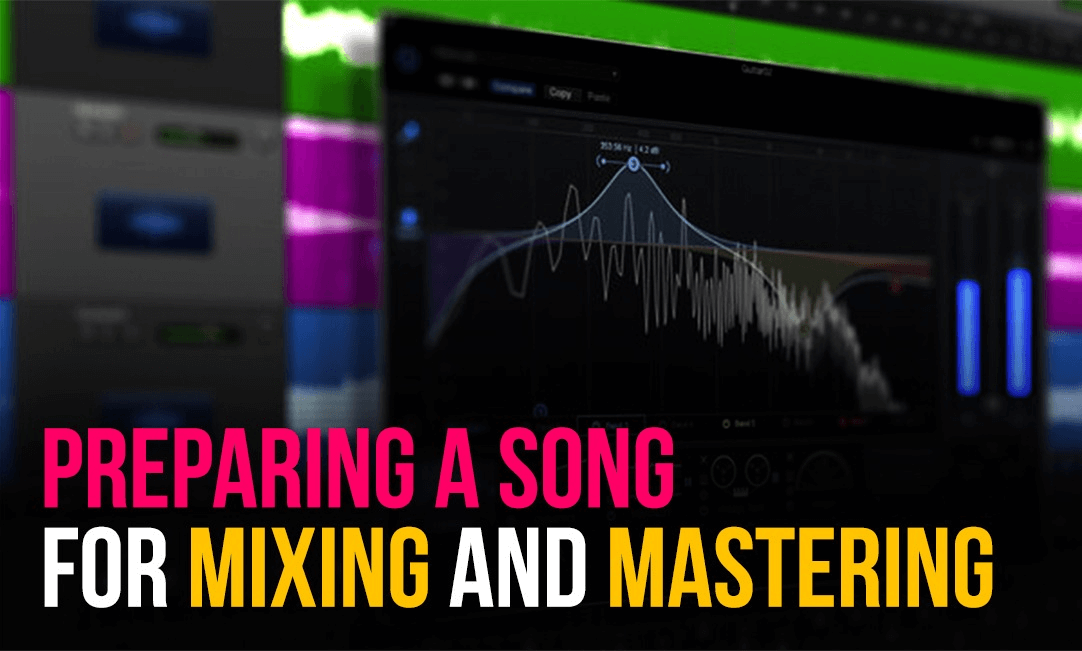Preparing a song for mixing and mastering

The process of creating a master copy of a track from which all other replicas of the recording are made is known as mastering. Even before audio mastering, mixing should be performed. Before forwarding your music to mastering, make sure you find the appropriate balance (volumes and EQing of individual tracks) because the mastering engineer will be capable of treating the aggregate of your efforts, not just the individual tracks/channels. A good mix equals a good master; a bad mix cannot be turned fantastic even with the best Mastering Engineer on the planet, hence the mix should come first. Before sending your music to mixing and mastering, there are five things you should do.
Here are some things to do before sending tracks to mixing online:-
1. Desires and expectations must be communicated to audio engineers.
Talk to your engineer in detail about what you want, as well as what is and isn't included in their mixing service. Get a clear understanding of what is required of you in terms of sending files, information, and money by email, phone, or Skype. Also, inquire about the final deliverables that are included as usual, as well as any additional expenses for additional mixes. If you have any specific priorities, such as turnaround time, processing, or impacts, let us know. Let your engineer know what you want from the beginning of the project so that the session may be tailored to meet your needs. Requesting something at the end of the mixing process can take a long time to prepare and will almost certainly result in additional fees.
2. Finish all editing, adjusting, and arranging suggestions.
There is no editing or modifying involved in the mixing process. You'll end up with a fantastic mix that's still out of tune owing to the voices! Make all of your vocal comps and then just give the mix the comped track. Ask your mix engineer to choose one if you don't want to send them all. no.
This, like tuning, is a decision made by you or your producer, not the mix engineers. Remember that any printed reverb or delays that employ the untuned vocal will be out of tune as well, so they will need to be reprinted once the tuning is finished. So, finish all of your editing and tuning, eliminate any unnecessary audio files or tracks, and print any special effects you want to keep in the mix.
3. Set up a track as a reference.
A commercial reference track gives the mix engineer insight on the sound character you're searching for in the overall mix, while the rough mix provides level and placement information. Do you want your combination to be light and airy or deep and rich? The mixer will be able to hear what you want in the end mix if you provide a reference. drumsticks on a snare drum you have a specific snare sound in mind? Please provide a reference. Do you have a favorite vocal effect from a recent track that you'd like to see replicated in the breakdown section? Please provide a reference. Sending a reference might be significantly more informative than attempting to define what you're looking for in a special effect in words. It also helps you save time.
Things to do before sending the tracks to mastering online:-
1. Silence is part of the package.
Leave quietness at the opening and termination of your track. Leaving a few bars of silence at the beginning of your track ensures that you remember to incorporate reverse effects and risers while allowing 4-8 bars of silence at the end allows delays and reverb tails to fade away. Once your audio has been limited by your mastering engineer, quiet delays and reverb tails become more visible, and you don't want to accidentally chop them out when you export your file.
2. Make sure your track's volume peaks at between -6 and -3dB.
Everyone will tell you that the "optimal" level for sending your mixes off for mastering is a different DB figure. Some experts recommend avoiding peaks greater than -3dB or -6dB, while others recommend aiming for an RMS value instead. You're alright as long as your song has no "overs" — that is when the signal climbs up to or above digital zero. There's a case to be made that any converter will begin to color the signal once it rises above -3dB (some more, some less), but as long as you don't touch zero anywhere, the coloring is usually minimal. If you're categorically worried about it, go for the "sub -3dB" recommendation. Propel your mastering engineer the highest-quality mix you can catch, but don't up-sample the file to make it larger than it was recorded. WAV files are preferable,
CONCLUSION
It's all too mutual for the Mastering Engineer to go months deprived of hearing from the band, engineer, or producer until they're convinced the mix is comprehensive and there's no turning back. The release date of the album is rapidly approaching, leaving little time for back-and-forth work. On the other side, mastering should not be disregarded, and your Mastering Engineer should be brought in close to the end of the mixing process. As mastering engineers, we spend our days listening to mixes. You should conduct some ONLINE SOUND MASTERING by Zoom Recording Studio when you've finished mixing.